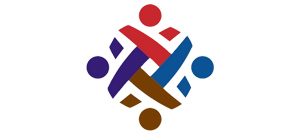Article 1
SLOWING DOWN TO GO FASTER

In today’s fast-changing and competitive environment, most leaders are running at breakneck speed to keep up with the changes. The pandemic, the slowing down of businesses and the uncertainties created by the US-China trade war are examples of the changing landscape that business leaders are operating under.
On the organisation’s side, everyone is increasingly busy with virtual meetings after meetings to attend. In many organisations that we worked with, people lament that they don’t have the time to think or to plan out what we need to do. “There are so many problems everywhere. We are always firefighting.”
To lead your people effectively — especially during a crisis — requires a lot of perseverance and patience. I have observed that more often than not, leaders lose their composure when facing deadlines or adversities. This will inevitably impact their direct employees who will feel the stress being transmitted by their leaders. The result is a work environment that is highly tensed and stressed out. It is like hamsters running on a wheel – going faster and faster; and yet not going anywhere.
In my area of work in training and coaching C-suite Executives and High-Potential Leaders, I have often heard leaders complaining about being “so busy” and “stressed out”. They are expected to put out the fires, and they don’t have the time to think of a longer-term solution to their problems. We “don’t have time to think” is their common excuse when asked why don’t they slow down to see what is happening.
So, what do I mean by slowing down to go faster?
In today’s workplace, many managers are promoted because they do well in their last position. More often than not, they are good at what they were doing – which is often to manage work processes or to make sure things are done right. In their previous role as supervisors, achieving KPI’s, compliance and doing what one was told to do was often well rewarded.
Harvard Business Review September 2020 issue, David Suss wrote an article entitled “Becoming a Patient Leader”, whereby he outlined the SEAL motto, “Slow is smooth and smooth is fast.” The article connects with what I am sharing today that a good leader needs to slow down before he can go faster.
Slowing down can mean many things:
- Providing clear vision or goals moving forward
- Checking to see whether people are on-board
- Spending time to listen to the concerns of people
- Checking in to see how people are doing
In short, it could be any form of behaviour where a leader makes the time, effort and energy to connect with his people and bring them along to where he or she is going and how to bring them along. These leaders inspire, encourage the heart, enable others to act and take the time to connect with their people.
When I was working in a mid-sized local bank, we had a new CEO joining us. He was well known in the industry, and there was a lot of excitement and buzz amongst our employees when they heard of this news.
I will not mention names for confidentiality purposes. When he joined the bank, he spent a lot of his time sharing his inspiring vision to the people – of becoming a “boutique bank” with attractive services to offer to targeted clientele. In the first three months, he also sat down with the team to know them better and to listen to their concerns and issues.
He didn’t tell us what he wanted us to do. He just painted a big picture of what the future would look like. He didn’t tell us to work harder. He was very open to what was being shared, and he listened to all the “complaints and conflicts” that we had. Like any organisations, we had our fair share of dysfunctional behaviors.
He visited branches and spent a lot of time to understand the issues, the challenges and the problems that people brought up. After a while, we were all wondering what was going to happen.
Lo and behold, 3 months after listening to our “complaints, shortcomings and suggestions, we came together again for a meeting. He surprised us by sharing the action plans being taken to address most of the issues highlighted. We were pleasantly surprised by the “goodies” and the way he went about to align the processes that created a lot of conflicts in the bank. Amongst them was an upward revision of our pay scales, better fringe benefits, increased authority to the Branch Managers and et cetera.
This was a classic case of a leader slowing down to listen to the issues, challenges and problems. Once he understood the real issues, he took the necessary action to create the right processes in terms of operations, credit approval, IT support etc.; he brought in the right people along the way. At the end of the meeting, he asked everyone in the room a simple question, “Are there any more issues?”. The whole room was silent. Then he said, “Let’s go to work!”
In hindsight, what did the CEO do?
In many ways, he was focusing on aligning people, process and purpose. He invested time and energy at the beginning – to create alignment. This helped pulled everyone together. No doubt it was a slow and painstaking process. As a leader, he exhibited patience and perseverance. When you win over the hearts of your people, they are more than willing to run the extra mile.
Conclusion
Slowing down is a simple concept that can be applied in our life and work. Whenever we are rushing around or pushing people to run faster, we just need to slow down –to review or to check if people are still behind us or whether we are running in the right direction. It will not take much time to slow down, but it will surely avoid costly mistakes or even crashing into the wall.
Postscript: The Bank grew exceptionally well during his tenure. Loans, Deposits, Profits grew by three (3) to four (4) folds in the next two years period. The commitment of the employees to achieving the shared vision coupled with clear processes made it possible for the bank to grow.

Written By :
Dr Low Hun Seng,
Consultant & Coach,
Growell Learning & Coaching PLT
* The views and opinions expressed in this article are those of the authors and do not reflect the official policy or position of HRD Corp.
Article 2
WHAT GOT YOU HERE WILL NOT GET YOU THERE

In the event of promoting and embracing knowledge and skills, I personally have a yardstick to measure the depth one acquires. Unlike in the 50s, 60s, 70s and 80s; resources are now abundant in every nook and corner, provided that we know how to access and reach them. Back to my experience in the field of tutoring and facilitating employees in various technical and non-technical topics, I encounter the complacency and procrastination among my fellow participants in taking the right step to move forward. The ice-breaking sessions says it all – “I am forced by my manager to attend this training”, “actually I am not interested but what to do”, “this is a waste of time”, “this is not my subject or area”, “after all I am not paying the training fee” and much more pessimistic statements uttered by most the training participants.
Training and its effectiveness should be viewed as essential for the career advancement of all employees – regardless the positions. Training equips employees with the tools they need in order to face challenges in the evolving world; especially with the emergence of new technology.
Are we ready to meet the challenges and compete with our neighbouring countries if we are not equipped with the right knowledge and skillsets? Surely we will not be able to move forward if we choose not to improve ourselves, as the saying goes – What Got You Here Will Not Get You There. Hence, even though an organisation accepts us for our existing knowledge, experience and skillsets; we must continuously improve ourselves to experience career growth. Extreme measures and appropriate benchmarking have to be adopted and implemented inclusively within oneself. I have identified four (4) main instruments that are needed for an individual to progress in their careers based on my experience.
Cohesiveness
Cohesiveness is the basis of team building; which is the foundation of an organisation, company or social unit building. If the majority of employees in an organisation subscribe to it, then the chances of influencing the stubborn and non-believers in seeking knowledge as a future asset is possible. People have to be sincere and open in their way of thinking and must able to see the light at the end of the tunnel. Nobody should have a hidden agenda as far as receiving, sharing or delivering information to strengthen the room of knowledge. When confidence level has been established with each other, the chances of cohesiveness would absolutely prevail.
Loyalty
Loyalty refers directly to the question of whether an employee subscribes to the Vision, Mission, Pillars and Strategies of the organisation. It is crucial for the employees to fully understand these principles for them to decide whether they can uphold these principles and initiate the necessary effort to achieve the organisation’s ambition. It is excellent if it is the former as it means that loyalty will prevail. However, suppose the employee is not able to adjust to the established direction. In that case, it will be profitable for them to go somewhere else and save the torture of being subjected to some unnecessary discomforts.
Integrity
Again, this is the strength of the employees. Here comes the moral obligation that employees have for themselves and the organisation. Integrity in knowledge, skills, experience and practices should not be short-changed at all times. Upholding integrity in the workplace can be further reinforced by continuous improvements and practices of an individual. Cases of milking blood from the organisation and stealing flesh from your immediate neighbourhood can be totally avoided.
Professionalism
Professionalism is the strict adherence to the technical and operational requirements of an organisation. Knowledge and skills can be acquired through education, training and development; whereby professionalism can be activated through them with the right mind. An individual will not be considered as professional if their quality of work is not up to par to what is professed. In our everyday daily conversations, we would call this as “Cakap tak serupa bikin,” similarly to “walk the talk”. Hence, everyone needs to ensure that their performance aligns well with what they have asserted to avoid negative perceptions.
Conclusion
The four instruments or personal traits mentioned above are just the tip of the iceberg as there are many more that we could ponder upon to excel in our careers and social lives. We should strive to be positioned better than before at different times. Cohesiveness, loyalty, integrity and professionalism create a good path in reaching our ultimate goals and objectives. Adopting and implementing them in full capacity reinforces a sense of powerfulness, stimulates your energy and becomes a source of encouragement for you and others around you. Forgoing these instruments may result in patterns of negative thinking, pessimism and hopelessness. Nevertheless, it is important to visualise what we want to be and never lose sight of it in order to progress. I would also like to take this very opportunity to convey my heartfelt gratitude and thanks to Professor Tan Sri Dato’ Wira Dr.Mohd Shukri Ab Yajid who mentioned, “What Got You Here Will Not Get You There” in his speech during my son’s convocation many years ago. His message continues to inspire me until this day, reminding me the importance of striving to be positioned better than before in both our personal and professional life.

Written By :
Padmanathan Raman Nayar,
Managing Director & Principal Consultant,
Ultra Vision Training PLT
* The views and opinions expressed in this article are those of the authors and do not reflect the official policy or position of HRD Corp.









